MILLED RICE

Which group of food it (milled rice) belongs to.
Cereals
What is its protein content?
Protein content of milled rice is around 6.8 g per 100 g.
What is its caloric value?
345 kcal per 100 g
What are the limiting amino acids in it?
The limiting amino acid is lysine even though its content is higher in rice as compared to other cereals.
What is the effect of milling?
The milling process deprives rice of the following:
• Loss of protein up to 15%
• Loss of thiamine up to 75%
• Loss of riboflavin and niacin up to 60%
Those who sustain mainly on polished rice are susceptible to which nutritional disorder?
Beriberi
Why is rice protein considered better quality protein?
Rice contains more lysine than any other cereal.
Does 100 g of rice contain more protein than 100 mL milk?
Yes, milk protein content ranges from 1.1 g to 4.3 g per 100 mL, whereas the protein content of rice is 6.8 g per 100 g.
Which cooking practices compromise the nutritive value of rice?
• Washing rice in large quantity of water leads to loss of up to 60% of water-soluble vitamins, mainly the B-complex vitamins.
• Cooking rice in large quantity of water and draining away the excess water after cooking leads to even further loss of these vitamins.
PARBOILED RICE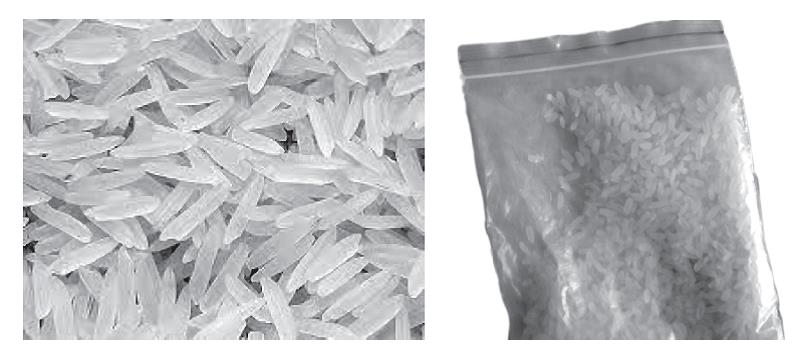
Identification
Parboiled rice (Fig. 3.2) has a glassy translucent appearance.
Mention its nutritive value.
• Protein—7.7 g per 100 g
• Carbohydrate—78 g per 100 g
• Fat—0.5 g per 100 g
• Calories—345 per 100 g
What is par boiling?
The technique recommended by CFTRI (Central Food Technological Research Institute) is as follows:
• Soaking paddy in hot water (65-70°C) for 3-4 hours followed by draining the water and steaming the paddy in the same pot for 5-10 minutes.
• The paddy is then sun dried and milled.
What are the advantages obtained by parboiling?
• The vitamins and minerals are driven into the deeper layers of the grain and are not lost by milling and washing.
• The grain becomes harder and rendered resistant to insect invasion.
• The starch present in the grain gets gelatinized and improves the keeping quality.
What is the disadvantage of parboiling?
Parboiling leads to loss of flavor of the rice; this is not relished by many.
Name the adulterant used in this item.
Mud, grit, and soapstone bits.
What is food adulteration?
It comprises mixing, substitution, concealing the quality, selling decomposed foods, misbranding, giving false labels, and addition of toxicants.
What are the legal measures to prevent adulteration?
• Enactment of "Prevention of Food Adulteration Act” (PFA)
• Rules revised from time to time by "Central Committee for Food Standard”
Food Standards and Safety Act, 2006 has replaced this act
BROWN RICE (HUSKED RICE)
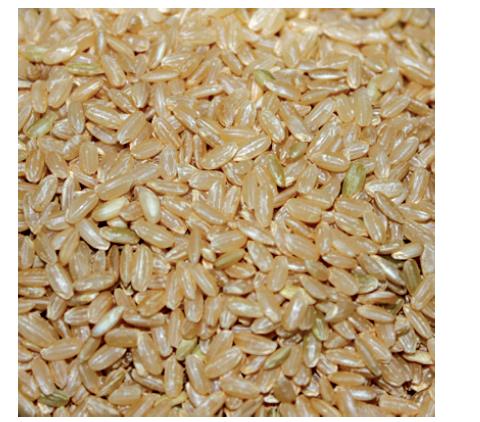
Mention its (brown rice) nutritive value.
• Protein—7.2 g per 100 g
• Fat—1 g per 100 g
• Carbohydrate—76.7 g per 100 g
• Energy—346 kcal per 100 g

Rice in different stages of milling is shown in the Figure above
WHEAT
Which group of food it (wheat) belongs to?
Cereals
What is its protein content?
Varies from 9 to 16 g per 100 g
What is its caloric value?
346 calories per 100 g
What are the limiting amino acids in it
• Lysine
• Threonine
MAIZE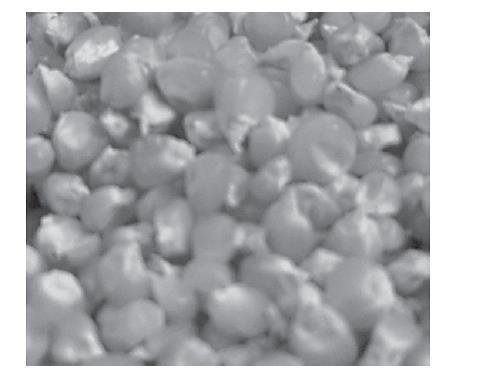
Mention its (maize) nutritive value.
• Protein—11.1 g per 100 g
• Carbohydrate—66.2 g per 100 g
• Fat—3.6 g per 100 g
• Calories—342 per 100 g
What are the limiting amino acids in it?
• Tryptophan
• Lysine
Mention the disease caused by consumption of excessive maize.
Pellagra
Which nutritional features are responsible for this pellagragenic effect?
• Deficiency of tryptophan
• Excessive leucine
How can you prevent it?
Niacin should be taken as supplement with maize.
BAJRA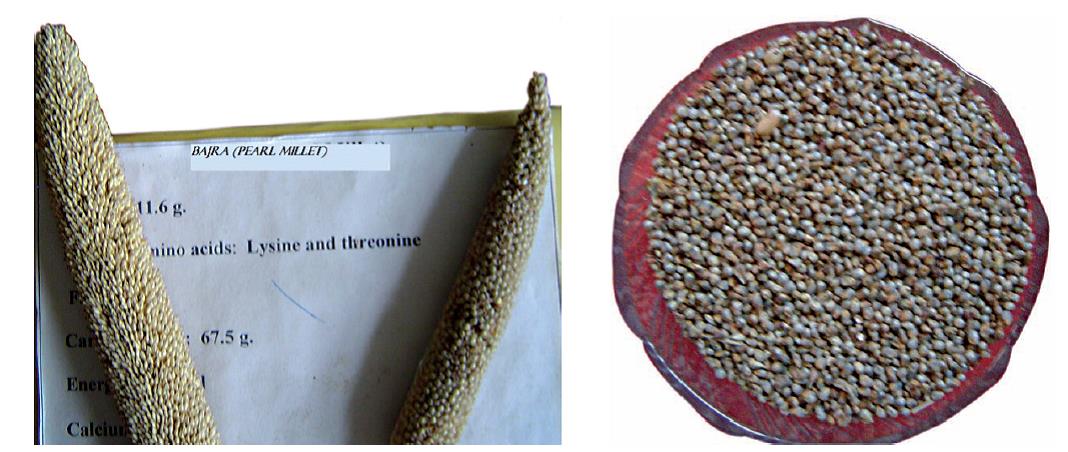
Figure displays two specimens of bajra (pearl millet).
Which group of food it belongs to.
Millets
Mention its nutritive value.
• Protein—10-14 g per 100 g
• Carbohydrate—67.5 g per 100 g
• Fat—5 g per 100 g
• Calories—361 per 100 g
What are the limiting amino acids in it?
• Threonine
• Lysine
Which mineral is abundant in this food article?
• Iron (8 mg per 100 g)
• Calcium
Which infestation is bajra crop prone to?
Claviceps fusiformis or ergot
Which disorder results from consumption of ergot-infested grains?
Ergotism
How can ergotism be prevented?
Ergot infested seeds can be removed from the rest by
• Floating them in 20% salt water
• Handpicking
• Air floatation
RAGI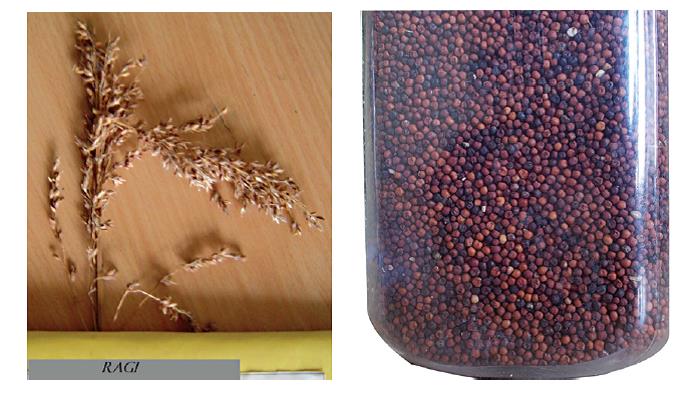
Which group of food it (ragi) belongs to.
Millets
Mention its nutritive value.
• Protein—7.3 g per 100 g
• Carbohydrate—72 g per 100 g
• Fat—1.3 g per 100 g
• Calories—328 per 100 g
Which mineral is abundant in this food article?
Calcium, 344 mg per 100 g
How does it qualify as a weaning food?
Ragi is suitable as a weaning food because
• It has a high content of calcium.
• It has all the essential amino acids in adequate amounts unlike other cereals and millets.
JOWAR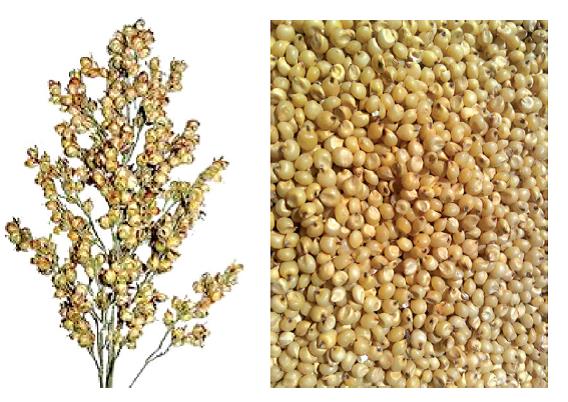
Which group of food it (jowar) belongs to?
Millet
What are the limiting amino acids in it?
• Lysine
• Threonine
It is rich in which amino acid and what is the disadvantage of this?
It is rich in leucine. Excess of leucine interferes with the conversion of tryptophan into niacin. The deficiency of niacin leads to pellagra.
How can it be prevented?
• Avoid total dependence on jowar.
• Consumption of groundnut which has niacin.
References:
1. Park K. Nutrition and health. In: Park's Textbook of Preventive and Social Medicine, 24th ed. Jabalpur, India: M/S Banarasidas Bhanot Publishers; 2017.
2. Gupta RK. Major foods and their nutritive value. In: Vaidya R, Tilak R, Gupta R, Kunte R, editors. Text Book of Public Health and Community Medicine, 1st ed. Pune, India: Dept. Community Medicine, AFMC, in collaboration with WHO, India office, Delhi; 2009: 741-9.
3. Srilakshmi B. Cereals and cereal products. In: Food Science, 3rd ed. New Delhi, India: New Age International (P) Publishers; 2005.
Ghee, Butter and Vanaspati Ghee: http://www.ihatepsm.com/blog/ghee-butter-and-vanaspati-ghee
Common Vegetable Oils used in India:http://www.ihatepsm.com/blog/common-vegetable-oils-used-india
Nutrition in an Egg: http://www.ihatepsm.com/blog/nutrition-egg
Nutritive Value of Milk: http://www.ihatepsm.com/blog/nutritive-value-milk
Nutritional Value of Commonly Consumed Nuts: http://www.ihatepsm.com/blog/nutritional-value-commonly-consumed-nuts
Nutritive Value of Common Dals used in India: http://www.ihatepsm.com/blog/nutritive-value-common-dals-used-india
Nutritional Value of Common Cereals: http://www.ihatepsm.com/blog/nutritional-value-common-cereals
Terms used in Family Health Study: Definitions and Explanations: http://www.ihatepsm.com/blog/terms-used-family-health-study-definitions-...
International Year of Millets 2023: https://www.mygov.in/campaigns/millets/
